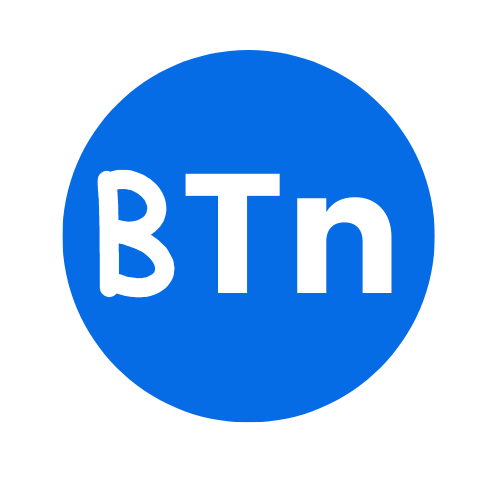The goal of this article is to provide you with a brief overview on how to prevent and mitigate digital attacks on your IT infrastructure. This article will cover the different types of digital attacks, their causes, and prevention methods. You will also learn about the most common vulnerabilities in IT infrastructure, what they are, what they do, and how they can be mitigated.
As we have seen in the past few years, cybercrime has become a big issue. In 2017, there were more than 1.2 billion malware attacks on computers and mobile devices worldwide – that’s about one attack every second! It’s not surprising that the world is becoming more and more digitalized, which makes it easier for hackers to infiltrate our systems.
Here are some helpful tips and tricks that you can use to protect your organization from digital threats:
- Hackers can steal sensitive data by tricking employees into downloading malicious software or clicking on phishing emails that look like they come from their company’s IT department
- Backups should be tested regularly
- Antivirus software should be installed
- Malware scanning software should be installed
- Firewalls should be in place
Table of Contents
What are Digital Attacks and Types of Digital Attacks
Digital attacks are a form of digital crime that is very common in today’s world. These attacks include hacking, phishing, malware, and ransomware.
These are a new type of cybercrime that involve the use of digital devices and networks to damage, disrupt, or steal information. The most common type of digital attack is a DDoS attack, which is when a hacker uses an overwhelming amount of traffic to take down the website. Other types of digital attacks include phishing and ransomware.
An attacker may also use malware to hack into your computer or mobile device and gain access to your personal data.
Types of Digital Attacks:
- Phishing – Phishing is a type of cybercrime in which someone sends an email that appears to be from a legitimate source in order to trick the recipient into disclosing sensitive information such as their username and password.
- Social Engineering – Social engineering is a form of computer fraud where an attacker utilizes human interaction in order to manipulate people into performing actions or divulging confidential information.
- Ransomware – Ransomware is malicious software that blocks access to files on a computer system or encrypts them so they cannot be used until a ransom is paid for their release.
Preventing & Mitigating Digital Attacks
Many of us are familiar with the term “hack” which is defined as a “computer attack in which unauthorized access is gained to computer data or systems, often by exploiting software vulnerabilities.”
In order to prevent and mitigate digital attacks, it is important for companies to be aware of the risks they face. As cyber threats become more sophisticated, it is necessary for organizations to adopt a layered approach in order to defend against cyber threats.
This means that a company should have multiple layers of security including:
- Physical security;
- Intrusion detection;
- Device hardening;
- Network segmentation; and
- Data protection
Digital attacks are a constant threat to every organization and its employees. Fortunately, there are some common-sense steps that can be taken to mitigate the risk.
One of the most important ways to protect your organization is by practicing cybersecurity best practices. These include implementing a comprehensive IT security programs in order to identify and prevent threats and vulnerabilities, as well as continuously monitoring logs for suspicious activity.
The other key way is by using encryption software on all devices that transmit sensitive data or content across networks. Encryption software helps protect information from being stolen by hackers or cybercriminals, who can intercept communications between devices and computers.
Digital Security Solutions That Can Help You Prevent & Mitigate Future Incidents
Cybersecurity is a major concern for all businesses, which is why more and more companies are looking for solutions to protect themselves from future incidents.
The most common way of doing this is by implementing a cybersecurity strategy, which includes preventative measures such as data backup and regular system updates.
With the advancement of technology, it has become easier for cybercriminals to breach our digital security. The good news is that there are solutions in place to help protect businesses from these attacks.
The future of cybersecurity is a constantly evolving topic. As new technologies are introduced, it becomes more difficult to keep up with the latest developments and ensure that your company is secure. It is difficult to know what to do and where to start when it comes to securing your company’s digital assets.
Here are the top 3 security solutions that can help you prevent and mitigate future incidents:
1. Encryption:
Encryption is a process of encoding messages or information in such a way that only authorized parties can access them. This process is also referred to as cryptography.
Encryption has been around for centuries, but the internet has made it easier for people to communicate with each other and share information. Encrypting data helps ensure that the information is safe from prying eyes, whether it’s on your computer, phone, or even an email attachment.
The most common encryption methods are Symmetric-key encryption and Asymmetric-key encryption. Symmetric-key encryption uses the same key for both encrypting and decrypting data while Asymmetric-key encryption uses two different keys – one public key and one private key.
2. Data Loss Prevention:
There are many security solutions that can help prevent and mitigate future incidents. We’ve compiled a list of the top five solutions that can help you prevent and mitigate future incidents.
Data Loss Prevention (DLP) is one of the most important security solutions in a modern business. It helps organizations to protect their data from unauthorized access, use, and disclosure. DLP also helps organizations to identify data breaches and reduce their risk of liability associated with data breach.
According to Gartner, DLP market will be worth $6 billion by 2020 with an average growth rate of 22%.
3. Network Monitoring:
Network monitoring is one of the most important security solutions that can help you prevent and mitigate future incidents. It is a must-have tool for any organization that needs to protect their network and data from threats.
In the past, companies have relied on physical security measures to protect their data. But with the advent of digital security, we are now able to protect our data in a more efficient way.
The major benefit of using digital security solutions is that they are not limited by physical boundaries and can be used across all types of industries.






